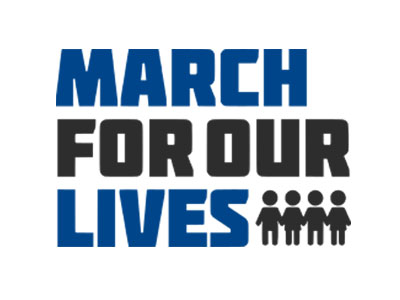
COVID and Gun Violence: Damages, Lessons, and the Future
As states are gradually returning to a much-desired, post-pandemic normal, schools are opening their doors to in-person learning. Unfortunately, this reopening serves as a reminder of one of America’s sad “normals” -- school shootings. Although most schools closed during the Coronavirus pandemic, gun violence did not stop -- it surged. Both the surge and the reopening call for us to reflect upon COVID’s link to gun violence: the damages it inflicted, the lessons it taught us, and the future it prompts. The Damages Despite many public spaces closing, gun violence persisted. Pandemic-related stress is a likely cause for the U.S.’s surge in gun sales and gun violence during 2020. Everytown For Gun Safety, an organization that collects data relating to gun violence, reports an additional 3,906 firearm deaths and 9,278 firearm injuries in 2020 compared to 2019. Moreover, there was a 64% increase in gun sales in 2020 compared to 2019. The rise in gun sales stemmed from NRA campaigns that used the crisis to promote gun use -- as they claimed social unrest was inevitable, and guns were the only viable protection method. As schools closed, children spent far more time at home than before, which increased the number of unintentional shootings by children. Before the pandemic, nearly one child per day unintentionally shot themselves or another person. However, when comparing March to December of 2020 with the same months of 2019, 2020 experienced a 31% increase in unintentional shooting deaths by children. This increase serves as a deadly reminder of the necessity of storing guns safely, especially in households where children are present. The pandemic and gun violence worked together to worsen other issues such as domestic violence, hate crimes, and the mental health crisis. Half of domestic violence service providers in 40 states reported increased gun threats towards survivors of intimate partner violence. Additionally, as COVID-19 acted as a catalyst for a spike in hate crimes against the Asian American Pacific Islander (AAPI) Community, guns armed hate and created deadly outcomes. Finally, a survey revealed that those who purchased guns during COVID-19’s early months were more likely to experience suicidal thoughts than those that did not buy guns during the pandemic: a dangerous statistic as firearms make suicide three times more deadly. While these statistics are grim, they hold lessons that policy-makers and activists can use to create a safer future. The Lessons The pandemic and gun violence’s interwoven consequences remind us of the necessity of intersectionality as a guiding principle in the movement. While members of the affected communities were already aware of gun violence’s deadly link to the issues they face daily -- such as economic inequality and race-based violence -- COVID-19 worked to expose the link to those that remained unaware. The pandemic drew necessary attention to a long-existing issue. Gun violence statistics frequently show disparities that hurt low-income, disadvantaged communities of color. The pandemic’s gun statistics are no outlier; the gun violence surge particularly hurt black communities. Not only were Black communities highly affected by COVID-19 itself, but they also felt the economic impacts of COVID-19 deeply. Research shows that economic stress puts people at a higher risk of gun violence, particularly suicide. Black communities are, as Everytown describes it, “overrepresented in jobs that cannot be done remotely--jobs that needed to be cut as the pandemic worsened….research shows that neighborhoods with high unemployment or high poverty rates have higher rates of gun violence.” As described previously, the gun violence epidemic is also woven into hate crimes. In 2020, even as overall hate crimes fell, hate crimes against the AAPI community surged by 150%. Similar to gun violence, the stress and economic instability of the pandemic only worsened the issue. Political rhetoric also placed blame on the AAPI community, further promoting these hate crimes. Data shows that Asian American Women make up the majority of the victims of these crimes -- as shown with the Atlanta spa shootings that murdered 8 people, 6 of which were Asian American Women. This rise in hate crimes highlights the intersection of racial justice, women’s issues, and gun violence -- reiterating the need for intersectionality within the gun control movement. The Future As schools reopen, many are reminded of the terror that school shootings bring. With schools closed in 2020, school shootings decreased. In 2018, there were at least 105 incidents of gunfire on school grounds. This number rose to 130 in 2019 but fell to 84 in 2020. However, as we look on to 2021, experts fear a re-surge in school shootings. Now, more than ever, lawmakers need to enact robust policies that will keep schools safe from guns. Moreover, the pandemic has had a strong effect on youth mental health. While the FBI affirms that active shooters don’t share common personality traits, most shooters do experience stressors. Stressors include financial strains, school conflicts, depression, and anxiety -- all of which COVID-19 has exacerbated. Therefore, as schools reopen, they must be proactive about prioritizing student mental-wellbeing. Gun violence will not only increase in schools, but also in public places. The July 4th weekend reminded us of this fact; more than 500 shootings over the weekend left 233 people dead and 618 people injured. Conclusion Both the pandemic and the gun violence crisis are grim. Still, their coexistence -- while exacerbating problems -- has created lessons that, if valued, will offset gun violence’s ravenous course. As the world emerges from the pandemic, intersectionality must be at the forefront of the gun control movement; without it, there is no movement.
